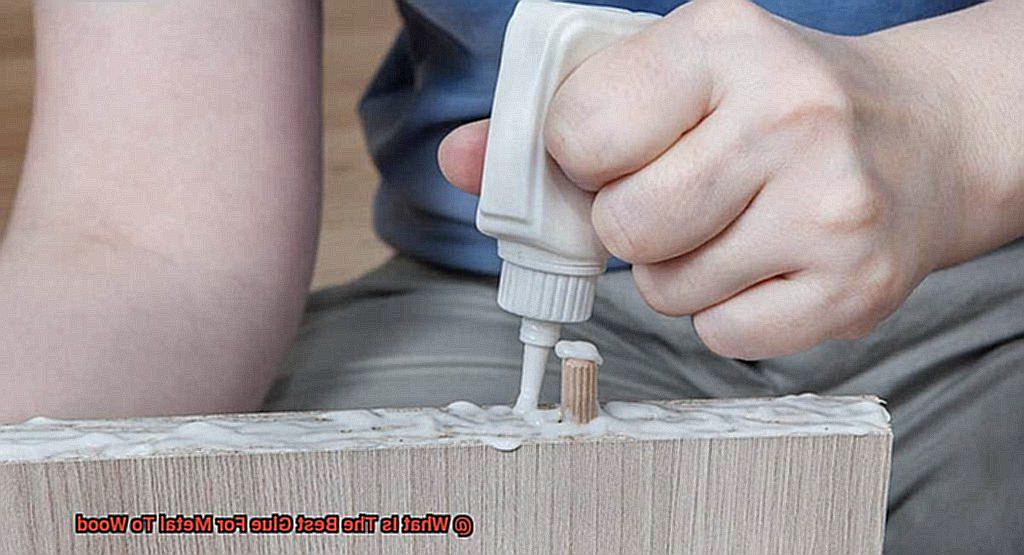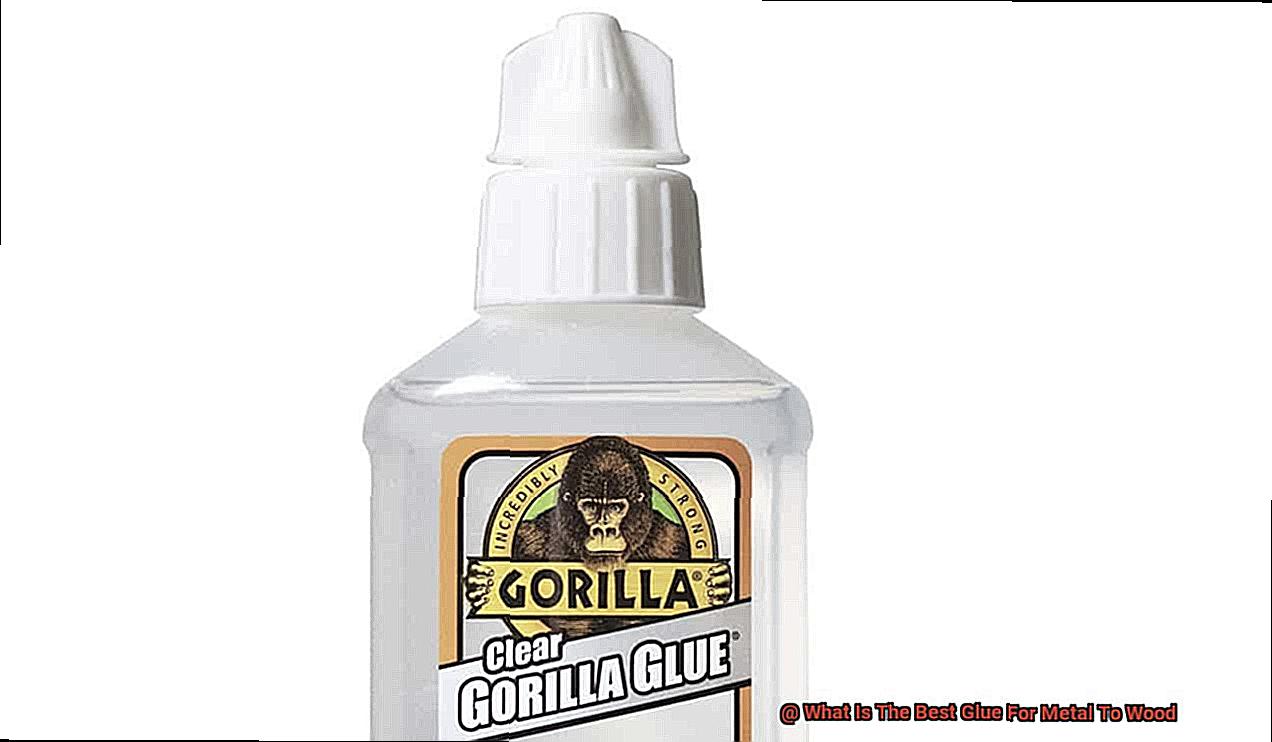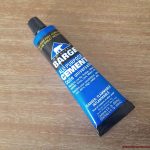Are you ready to unlock the secrets of seamlessly bonding metal and wood? Whether you’re a DIY enthusiast or a seasoned craftsman, this blog post is your ticket to achieving extraordinary results in your projects. We’ll dive into the captivating world of adhesives, where chemistry, technology, and craftsmanship converge to create the perfect bond.
From crafting stunning art pieces to constructing sturdy structures, finding the best glue for metal to wood can be a game-changer. It’s the key that unlocks endless possibilities and pushes the boundaries of what you can achieve. So join us on this journey as we unravel the mystery behind metal-to-wood adhesion and equip you with the knowledge you need for success.
Get ready for a fusion of creativity and practicality that will transform your ordinary projects into extraordinary works of art. With our guidance, you’ll discover the ultimate glue that combines durability with aesthetic appeal, allowing you to bond metal and wood with precision. Let’s dive in.
What is Metal to Wood Bonding?
Contents
Metal to wood bonding is the art of seamlessly joining metal and wood surfaces together using powerful adhesive materials. This technique is widely employed in the construction, furniture manufacturing, and automotive industries to create bonds that can withstand an array of forces and last a lifetime.
When it comes to selecting an adhesive for metal to wood bonding, several factors must be taken into consideration. First and foremost, compatibility between the adhesive and the materials being bonded is of utmost importance. Different types of metals and woods possess distinct surface properties, necessitating the use of an adhesive specifically formulated for these materials.
Bond strength is another crucial consideration. Depending on the intended application, varying levels of bond strength may be required. Heavy loads or constant movement demand a high-strength adhesive, while lighter loads or minimal stress may only necessitate a lower strength adhesive.
The flexibility and durability of the adhesive are also vital factors to assess. Metal and wood have divergent expansion and contraction rates in response to temperature changes or moisture absorption. Hence, the chosen adhesive should have the ability to accommodate these movements without compromising its bonding properties.
Working time and curing time are additional factors that must not be overlooked. Working time refers to the available timeframe for adjusting or repositioning the bonded parts before the adhesive sets. Curing time refers to the duration required for the adhesive to reach its maximum strength. Project requirements will dictate whether a longer or shorter working time and curing time are necessary.
There exists a wide range of adhesives that are commonly employed for metal to wood bonding purposes. Epoxy adhesives offer unparalleled strength and exceptional bonding properties, making them ideal for creating resilient bonds. Polyurethane adhesives strike a balance between strength and flexibility, making them suitable for applications that require durability with a hint of movement.
Cyanoacrylate adhesives, commonly referred to as super glue, facilitate rapid bonding with impressive strength, making them perfect for quick repairs or small-scale projects. Construction adhesives, on the other hand, are specifically designed for heavy-duty applications and can produce robust bonds on various surfaces, including metal and wood.
Factors to Consider When Selecting the Best Glue
Factors to Consider When Selecting the Best Glue for Metal to Wood Bonding:
Adhesive Type:
- Epoxy: Provides high bond strength and durability.
- Cyanoacrylate (super glue): Offers fast bonding but may not be as strong as epoxy.
- Polyurethane: Known for excellent flexibility, ideal for applications with joint movement.
- Construction adhesive: Provides strong bonding for heavy-duty projects.
Bond Strength:
- Consider the level of strength required based on the load or stress the joint will experience.
- Epoxy adhesives are known for their high bond strength and durability.
- Cyanoacrylate adhesives offer fast bonding but may not be as strong as epoxy.
Surface Preparation:
- Ensure both metal and wood surfaces are clean, dry, and free from contaminants like dust or grease.
- Lightly sanding both surfaces creates roughness for better adhesion.
- Some glues may require surface primers or activators for enhanced bonding.
Drying Time:
- Consider the application time and the time required for the glue to cure or reach its maximum strength.
- Quick-drying adhesives like cyanoacrylate are ideal for small projects or when time is limited.
- Epoxy adhesives may require longer drying times but provide superior strength.
Temperature and Moisture Resistance:
- Select a glue that offers good temperature and moisture resistance depending on the project’s environment.
- Some adhesives may not withstand extreme temperatures or high humidity, leading to weakened bonds.

Flexibility:
- Consider the need for joint movement or vibrations in the bonded metal and wood.
- Polyurethane adhesive offers excellent flexibility, absorbing stress and movement without compromising the bond.
Epoxy Adhesive
Epoxy adhesive is a versatile and reliable option for bonding metal to wood. With exceptional strength and durability, it can withstand heavy loads and resist shear forces, making it ideal for applications that require a strong bond. Additionally, epoxy adhesive is resistant to temperature fluctuations and moisture, making it suitable for both indoor and outdoor use in areas prone to moisture exposure.
One of the key advantages of using epoxy adhesive is its versatility. It can be used on a wide range of metals, including steel, aluminum, brass, and copper, and it adheres well to different types of wood, such as hardwood, softwood, plywood, and MDF. This versatility allows for various applications and ensures that the adhesive can be used on different materials.
Applying epoxy adhesive is also relatively easy. It typically comes in two components—a resin and a hardener—that need to be mixed together before use. This allows for precise application and ensures a strong bond when the two components react chemically. Once cured, epoxy adhesive forms a permanent bond that is resistant to vibrations, impact, and aging. This means that the bond will remain strong in the long term and not deteriorate over time.
Furthermore, epoxy adhesive has excellent gap filling properties. It can fill in small gaps or irregularities between the metal and wood surfaces being bonded, creating a strong and seamless connection between the two materials.
Epoxy adhesives are readily available in hardware stores and online, making them easily accessible for both professionals and DIY enthusiasts.
To achieve the best results when using epoxy adhesive for bonding metal to wood, it is crucial to follow the manufacturer’s instructions carefully. Properly preparing the surfaces being bonded by cleaning them thoroughly and allowing sufficient curing time are essential steps for maximum bond strength.
Polyurethane Adhesive
Polyurethane adhesive is a remarkable glue that offers numerous advantages when it comes to bonding metal to wood. Its flexibility allows it to create a resilient bond that can withstand the varying expansion and contraction rates of these materials. This means that even under stress or movement, the bond remains intact, ensuring durability and reliability.
One of the standout features of polyurethane adhesive is its exceptional water resistance. It’s perfect for both indoor and outdoor applications, as it can handle moisture exposure without compromising its bonding strength. So whether you’re constructing furniture or working on metal fabrication projects, this adhesive won’t let you down.
Another reason why polyurethane adhesive is highly regarded is its high initial tack. Imagine having a glue that grips firmly as soon as it’s applied – that’s the power of polyurethane adhesive. This characteristic is especially useful when dealing with heavy or unwieldy materials, as it reduces the need for additional support or clamping during the bonding process.
Versatility is another trait that sets polyurethane adhesive apart from its counterparts. It can be used on a wide range of metals, including steel, aluminum, and copper, making it an ideal choice for various projects. Pair this with its compatibility with different types of wood, and you have a glue that is ready to tackle any bonding challenge.
However, like any adhesive, polyurethane adhesive does have its limitations. To achieve optimal adhesion, proper surface preparation is necessary. This involves cleaning and roughening the surfaces to be bonded. Additionally, this adhesive usually requires longer curing times compared to other types of glues, which may affect productivity in time-sensitive projects.
Cyanoacrylate Adhesive (Super Glue)
Cyanoacrylate adhesive, also known as super glue, is a remarkable adhesive that is commonly used for bonding metal to wood. Its fast-setting and strong bonding properties make it a popular choice for various applications. Here are some key advantages and considerations to keep in mind when using cyanoacrylate adhesive for metal to wood bonding.
Advantages:
- Quick setting time: Super glue bonds within seconds, allowing for rapid and efficient bonding of metal and wood surfaces.
- Strong bond: Cyanoacrylate adhesive offers exceptional tensile strength, ensuring a durable and long-lasting bond between metal and wood.
- Versatility: Super glue can effectively bond different types of metal to wood, including stainless steel, aluminum, and brass.
- Ease of use: Cyanoacrylate adhesive is readily available and easy to apply, making it a convenient choice for various projects.
Considerations:
- Load-bearing capacity: Although super glue provides a strong bond, it may not be suitable for load-bearing joints or areas subjected to constant stress. In these cases, specialized adhesives like epoxy or polyurethane may be more appropriate.
- Surface preparation: Proper surface preparation is crucial for achieving a strong bond. Both the metal and wood surfaces should be clean, dry, and free from any oil, grease, or debris. Sanding or roughening the surfaces can enhance the adhesive’s grip.
- Curing time: While cyanoacrylate adhesive sets quickly, it may require additional curing time to reach its maximum strength. It is important to follow the manufacturer’s instructions regarding curing time for optimal results.

Silicone Adhesives
Silicone adhesives are the superheroes of the glue world when it comes to bonding metal to wood. These adhesives boast some incredible advantages that make them the top choice for this type of application.
First and foremost, silicone adhesives create a bond that can withstand the test of time. They adhere well to both metal and wood surfaces, creating a strong and reliable bond that won’t let you down.
In addition to their durability, silicone adhesives are also incredibly versatile. They have excellent bonding capabilities with a wide range of materials, making them suitable for various projects. Whether you’re working with different types of metals or wood, silicone adhesives can handle it all.
One of the most impressive features of silicone adhesives is their resistance to environmental factors. These tough cookies can handle temperature changes, moisture, and even UV exposure without losing their bonding strength. This makes them perfect for outdoor applications where the adhesive needs to brave the elements.
Silicone adhesives also offer chemical resistance. If your metal and wood surfaces come into contact with solvents, oils, or other corrosive substances, silicone adhesives have got your back. They can maintain their bonding strength even in the presence of these chemicals, ensuring a reliable and long-lasting bond.
Unlike some other adhesives that may become brittle over time, silicone adhesives remain flexible. This flexibility allows them to accommodate any movement or expansion that may occur between the metal and wood surfaces, preventing cracks or breaks in the bond.
Lastly, silicone adhesives are user-friendly. They come in convenient tube or cartridge forms, making it easy to dispense and apply them. Whether you’re a professional or a DIY enthusiast, using silicone adhesives is a breeze.
Specialized Adhesives for Metal to Wood Bonding
Specialized adhesives for metal to wood bonding offer a strong and durable connection between these two materials. One popular option is epoxy adhesive, known for its excellent bonding strength and ability to bond different materials together. To ensure optimal bonding with epoxy, it’s important to clean both the metal and wood surfaces thoroughly. Sanding the metal surface and wiping it with a solvent will remove any dirt, oil, or contaminants.
Polyurethane adhesive is another commonly used option. It provides high strength and flexibility, making it suitable for applications where there may be some movement or vibration. While polyurethane adhesives require less surface preparation than epoxy, cleaning the surfaces before bonding is still crucial.
Cyanoacrylate adhesives, or super glues, can also be used for metal to wood bonding. They bond quickly and provide good strength. However, they may not be as durable in applications with constant stress or movement.
It’s important to note that not all adhesives are suitable for all types of metals and woods. Some metals, such as aluminum or stainless steel, may require special primers or surface treatments. Similarly, certain types of wood may have natural oils or high moisture content that need special considerations.
To select the best adhesive for metal to wood bonding, factors such as the specific metals and woods being bonded, environmental conditions, required bond strength, and application method should be considered. Consulting with adhesive manufacturers or experts in the field can provide further guidance on the most suitable adhesive for your project.
i6_2g4A3EyY” >
Conclusion
In conclusion, finding the perfect glue for bonding metal to wood is crucial if you want strong and long-lasting connections between these two materials. There are several factors to consider when choosing the right adhesive – adhesive type, bond strength, surface preparation, drying time, temperature and moisture resistance, and flexibility.
When it comes to versatility, epoxy adhesive takes the crown. It boasts exceptional strength and durability, making it suitable for a wide range of metals and wood types. Not only does epoxy adhesive resist temperature fluctuations and moisture, but it also fills gaps seamlessly for a flawless connection between metal and wood surfaces.
If you’re looking for flexibility and joint movement, polyurethane adhesive is your go-to. This adhesive offers excellent water resistance and initial tack. Just bear in mind that it may take longer to cure compared to other options.
For quick setting time and robust bonds, look no further than cyanoacrylate adhesive – also known as super glue. While it’s versatile and easy to use, keep in mind that it may not be suitable for load-bearing joints or areas under constant stress.
When durability is paramount, silicone adhesives shine bright. They can withstand environmental factors like temperature changes, moisture, UV exposure, and chemicals. Plus, they remain flexible over time while being user-friendly.
Whether you opt for epoxy, polyurethane, cyanoacrylate or silicone adhesives depends on your project’s specific requirements. These specialized adhesives offer reliable bonding solutions tailored to your needs.
To achieve optimal results with any adhesive you choose, make sure to follow the manufacturer’s instructions regarding surface preparation and curing time. And don’t hesitate to seek guidance from adhesive manufacturers or experts who can provide further assistance in selecting the best glue for your metal-to-wood bonding endeavors.
With the right adhesive at your disposal, there’s no limit to what you can accomplish – from constructing sturdy structures to crafting breathtaking art pieces.






